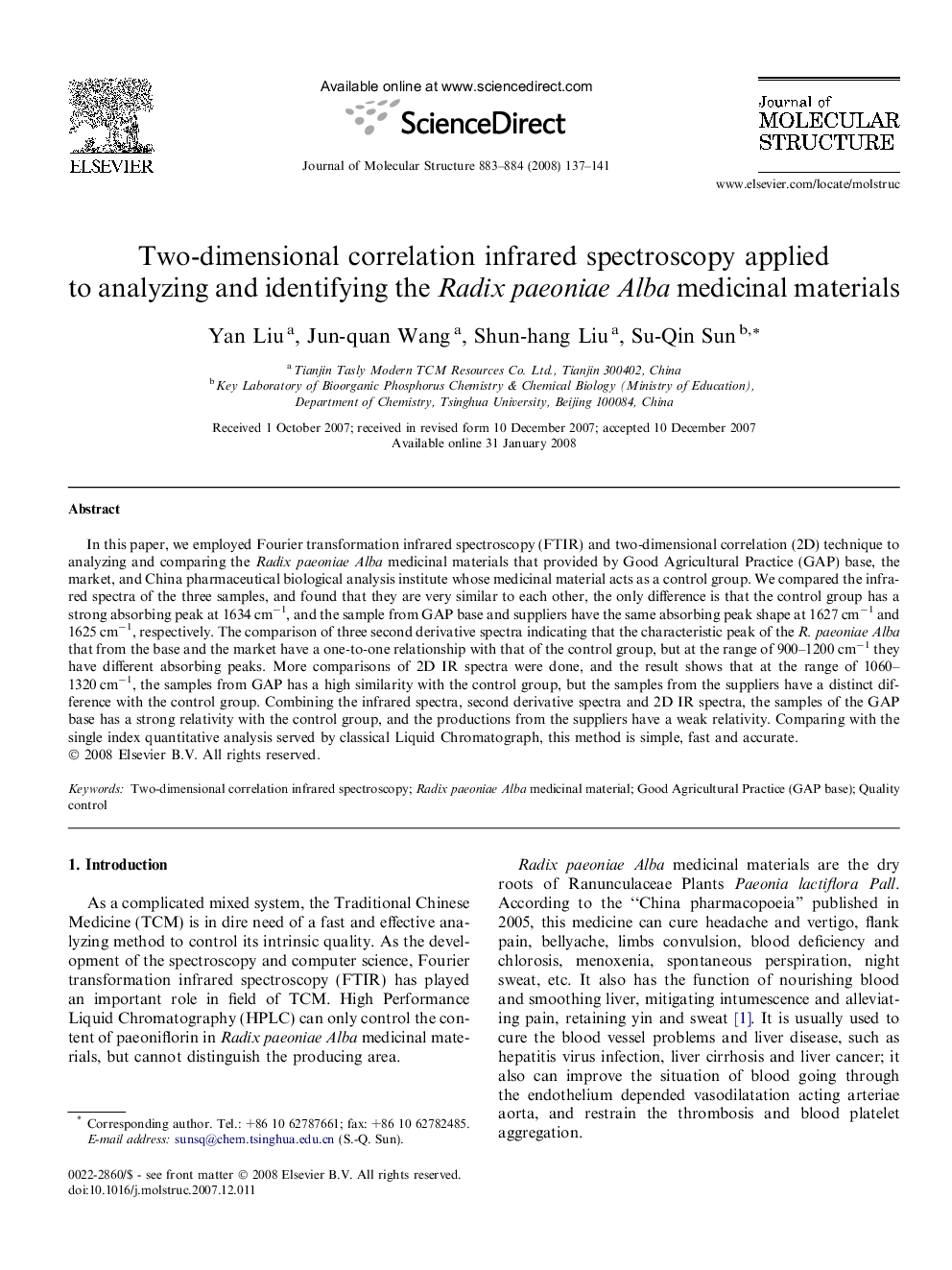| Article ID | Journal | Published Year | Pages | File Type |
|---|---|---|---|---|
| 1407315 | Journal of Molecular Structure | 2008 | 5 Pages |
In this paper, we employed Fourier transformation infrared spectroscopy (FTIR) and two-dimensional correlation (2D) technique to analyzing and comparing the Radix paeoniae Alba medicinal materials that provided by Good Agricultural Practice (GAP) base, the market, and China pharmaceutical biological analysis institute whose medicinal material acts as a control group. We compared the infrared spectra of the three samples, and found that they are very similar to each other, the only difference is that the control group has a strong absorbing peak at 1634 cm−1, and the sample from GAP base and suppliers have the same absorbing peak shape at 1627 cm−1 and 1625 cm−1, respectively. The comparison of three second derivative spectra indicating that the characteristic peak of the R. paeoniae Alba that from the base and the market have a one-to-one relationship with that of the control group, but at the range of 900–1200 cm−1 they have different absorbing peaks. More comparisons of 2D IR spectra were done, and the result shows that at the range of 1060–1320 cm−1, the samples from GAP has a high similarity with the control group, but the samples from the suppliers have a distinct difference with the control group. Combining the infrared spectra, second derivative spectra and 2D IR spectra, the samples of the GAP base has a strong relativity with the control group, and the productions from the suppliers have a weak relativity. Comparing with the single index quantitative analysis served by classical Liquid Chromatograph, this method is simple, fast and accurate.
